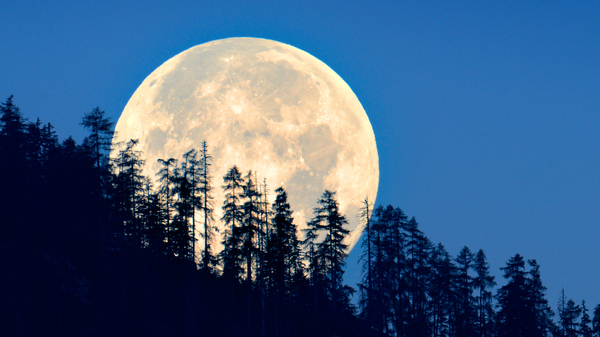New Delhi: Skygazers are in for a celestial treat as the sky in August will witness supermoons and a ‘Blue Moon’.
According to NASA, the first full Moon of the month will appear on the afternoon of August 1, at 2.32 p.m. EDT (12.02 a.m. IST on August 2). The Moon will appear full for 3 days around this time, from early Monday morning into early Thursday morning.
Traditionally it is called the ‘Sturgeon Moon’ because the giant sturgeon of the Great Lakes and Lake Champlain of the US were most readily caught during this part of summer, according to Old Farmer’s Almanac — a reference book containing weather forecasts.
A supermoon exceeds the disk size of an average-sized Moon by up to 8 per cent and the brightness of an average-sized full Moon by some 16 per cent.
On Wednesday, August 30, the Full Moon will peak at 9.36 p.m. ET (7.06 a.m. IST on August 31), as per the Old Farmer’s Almanac.
NASA reports that Blue Moons are of two kinds –monthly and seasonal. The monthly Blue Moon is the second Full Moon in a calendar month with two Full Moons. The seasonal Blue Moon is the third Full Moon of an astronomical season that has four Full Moons.
Contrary to its name, a Blue Moon has nothing to do with the Moon having a blue hue. However, very rarely there are actual blue-tinted Moons due to particles thrown into the atmosphere by natural catastrophes, the US space agency said.
Generally, Blue Moons occur every 2 to 3 years. The last Blue Moon was on August 22, 2021. “Warm summer nights are the ideal time to watch the full moon rise in the eastern sky within minutes of sunset, and it happens twice in August,” retired NASA astrophysicist Fred Espenak, was quoted as saying to Sky.com.
The last time two full supermoons appeared in the same month was in 2018 – and it won’t happen again until 2037, the report quoted Italian astronomer Gianluca Masi, founder of the Virtual Telescope Project as saying. Hence the phrase “once in a blue moon”.
(IANS)















